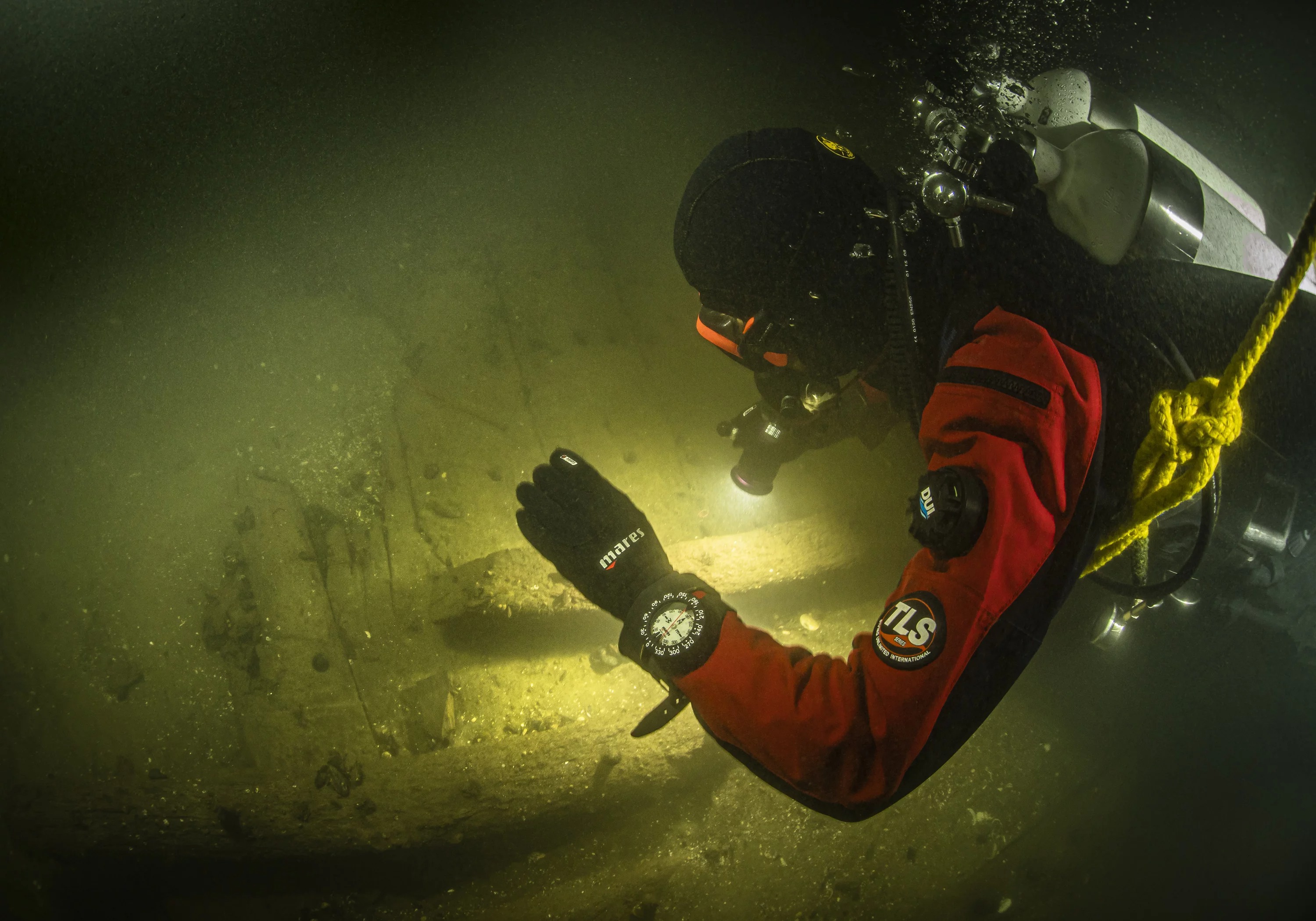
A local waterway and shipping authority was conducting a routine measurement in northern Germany’s Trave River when they stumbled upon a rare piece of history — a 17th-century shipwreck. Researchers from Kiel University, who revealed the find on July 26, 2022, believe the ship sank during the end of the Hanseatic period. This refers to the time between the 13th to 17th centuries when a network of 190 cities in 16 Northern European countries dominated maritime trade in the Baltic Sea.
"Independent dating of the ship's timbers in three different laboratories revealed that the ship must have been constructed in the mid-17th century," said Dr. Fritz Jürgens of the Institute of Prehistoric and Protohistoric Archaeology at Kiel University. “You always hope to make a find like this, and suddenly you have one right before your eyes."

All that remains of the vessel are some of its wooden beams and large parts of the cargo. The researchers identified the vessel as a fluyt – a single-masted Dutch cargo ship. Measuring between 66 and 82 feet (20 and 25 meters) long, the medium-sized cargo vessels were commonly used to transport goods across the Baltic Sea.
The ship was carrying quicklime — used in building construction — from Scandinavia to Germany. Of the 150 barrels found, 70 remained on board the vessel, while the other 80 were scattered on the ocean floor nearby. This suggests the boat did not capsize. Instead, it may have sunk after being damaged while trying to make a bend in the Trave River.

Underwater archeologists, who have been studying the wreck since July 2021, say the ship is eroding rapidly, and its exposed sections are infested with shipworms. They warn that the precious artifact will be forever lost if no protective measures are taken. The Kiel University researchers are currently working with the city of Lübeck and other institutions to find a way to salvage the wreck from the river and preserve it for future generations.
Resources: uni-kiel.de, DW.com,Gizmodo.com
